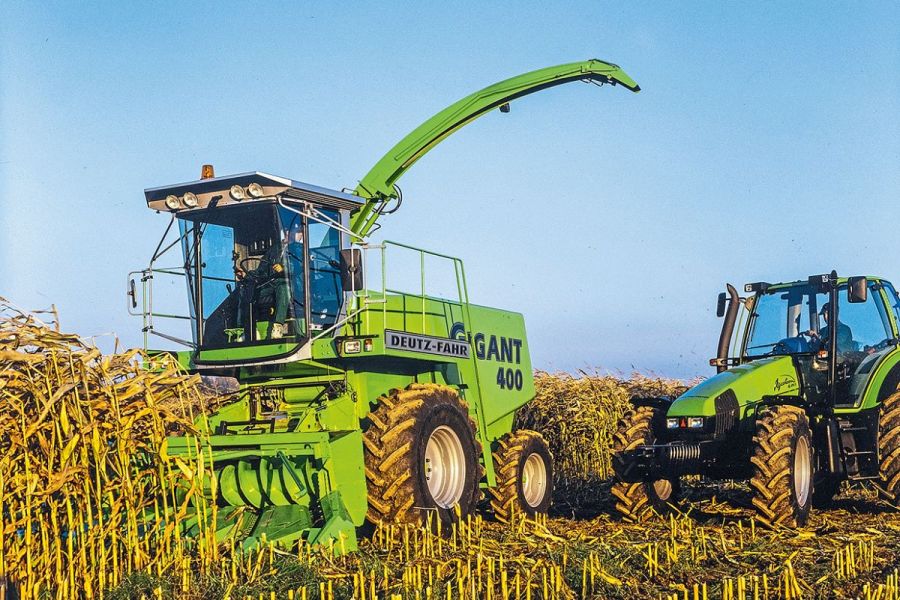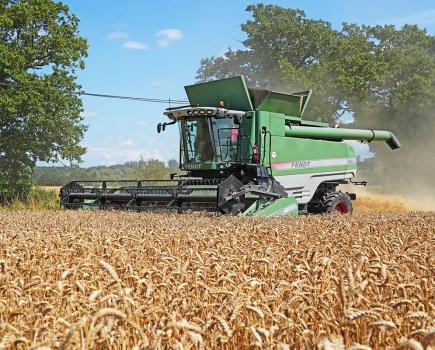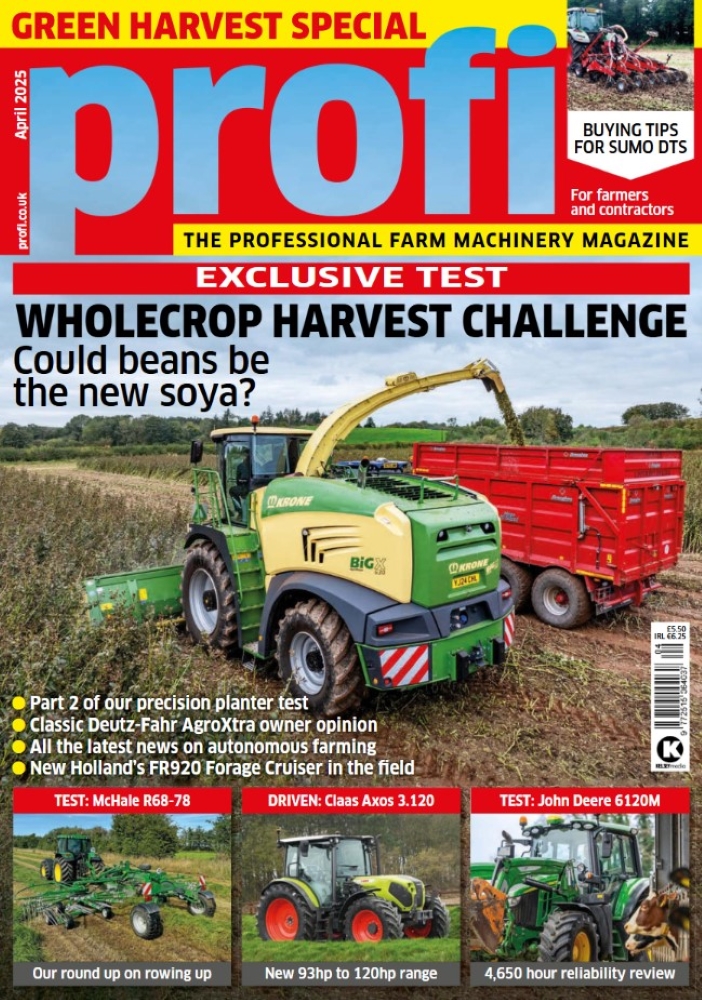After years of absence from the forage harvester market, Deutz-Fahr debuted the Gigant 400 at Agritechnica in 1995. The self-propelled extracted more than 400hp from a Deutz engine, while the chopping unit was sourced from LTS.
Although there had been mumblings within the machinery industry, it was still a major surprise when Deutz-Fahr launched the production-ready Gigant 400, a fully-fledged forage harvester. The company already had a lot of the bits on offer for the forage harvester, as the engine, chassis, transmission, cab and several other components were available at the Lauingen combine factory. Yet one critical component needed to be developed, the all-important forage chopping unit.
A seemingly suitable solution was found at Landtechnik Schönebeck (LTS). Apart from the intake assembly and a few minor details, it originated in a machine called the Maral 150 and slightly more powerful Maral 190.
The 600mm wide, 800mm diameter chopping drum was equipped with 12 full-width knives in a diagonal arrangement. Knife sharpening had been refined and automated by Deutz-Fahr.
Unicracker for the kernels
The Unicracker unit was in charge of kernel processing. At the time it was considered one of the key features of the new foragers, and was also adopted from the Maral. The cracker used interlocking, profiled discs to shred the material. As usual, the unit was swapped for a grass channel when chopping grass. To make this operation and all the other servicing work easier, the firm’s design team had included plenty of space between the chopping unit and the engine.
Deutz-Fahr also developed the intake and pre-compression assembly, which consisted of four beefy rollers (the Maral had eight). It was clever stuff: the first roller was made of plastic in order to reliably detect metals with the integrated detector and then stop the drive in time.
For more up-to-date farming news and reviews click here and subscribe now to profi for just £3.99 an issue.






